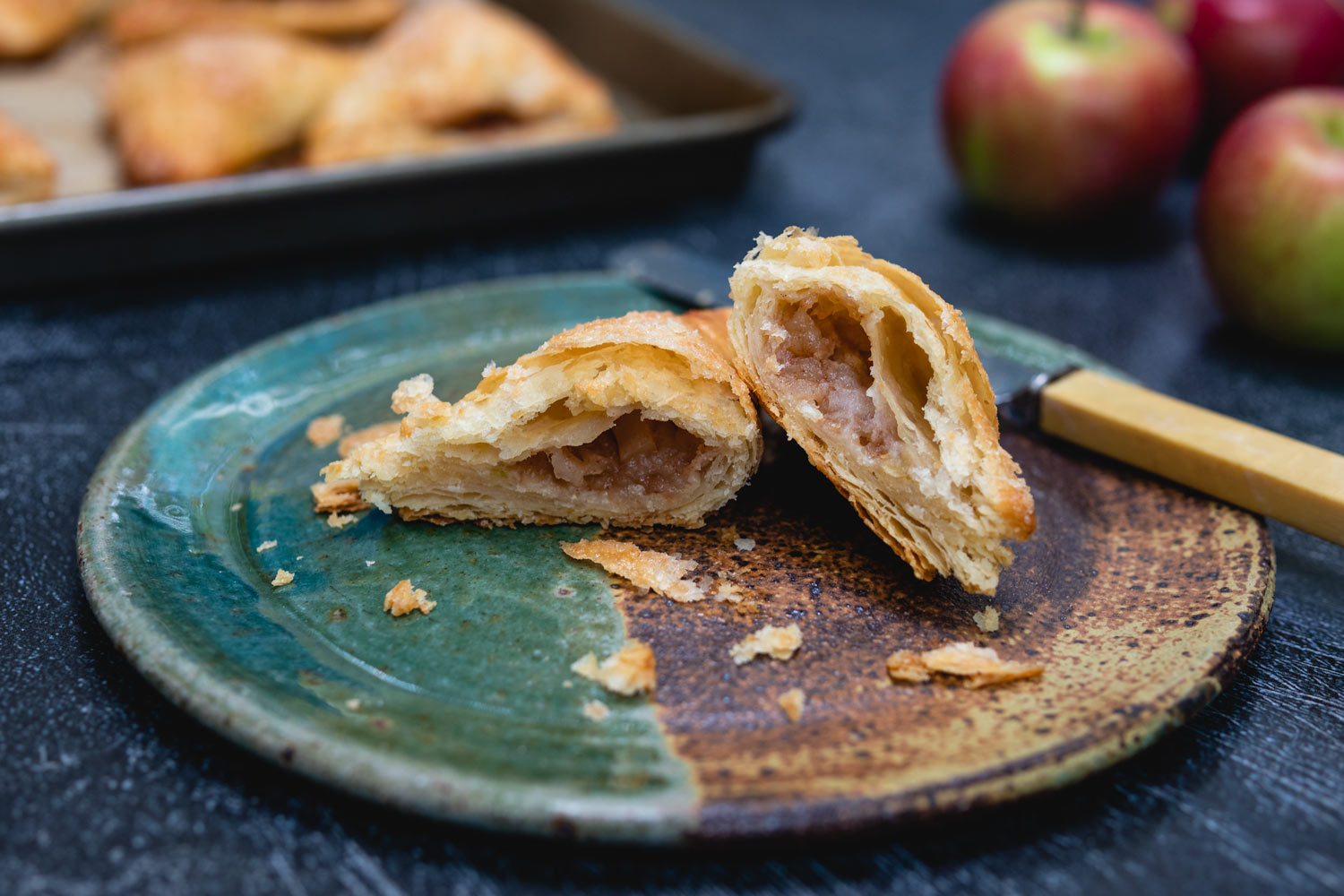
It’s the first week of autumn, and I’m tentatively ready to let go of summer.
I usually try to keep current events out of this blog, but there’s a lot of uncertainty this season. With elections in the US in November, a still unsettled Brexit ahead, and a possible second lockdown looming, I’ve put a lot of important decisions on hold.
With the increasing prospects of hunkering down in winter, I’m trying to hold on to Dutch gezelligheid.
Dutch Gezelligheid
Gezellig is a Dutch word that can be roughly translated to cozy or fun. It’s almost like a sense of belonging. The word has many applications: a place can be gezellig, like your favorite café; a person can be gezellig, like someone you enjoy spending time with; or a situation, like a party.
The root, gezel, actually means companion or friend in Dutch, so while it’s felt personally, it’s usually shared with others.
Gezelligheid fits within a group of related concepts in other Northern European countries that are difficult to translate into English. Norwegian koseleg, Danish hygge, German Gemütlichkeit, and Swedish mysig. They don’t have the exact same meaning or context, but they are definitely similar concepts.
Gezellig Social Distancing
Even facing “social distancing” and the possibilities of a second lockdown in winter, we can try to add in some gezelligheid. We may not be able to get close to others, but that doesn’t mean we can’t find ways to spend time together.
If you’re stuck at home, you can still call, message, or video-call your friends. I have friends that organize a weekly pub quiz with their family. Others that arrange family workouts by video-call. Some streaming services even allow you to watch movies together from different devices.
If you are allowed to go out, you can still meet people while keeping your distance. Over the summer we had almost weekly picnics in the parks. We all brought separate picnic blankets, brought our own drinks and snacks, and spread out on the green.
Recently, we went apple picking. It was easy to keep our distance but still do something together and catch up. Joking around out in the country, taking in the newly crisp September air, we were able to distance ourselves from the overload from our news feeds and tiny apartment.
We can’t hug right now, but you can still try to creatively bring some gezelligheid to your life.
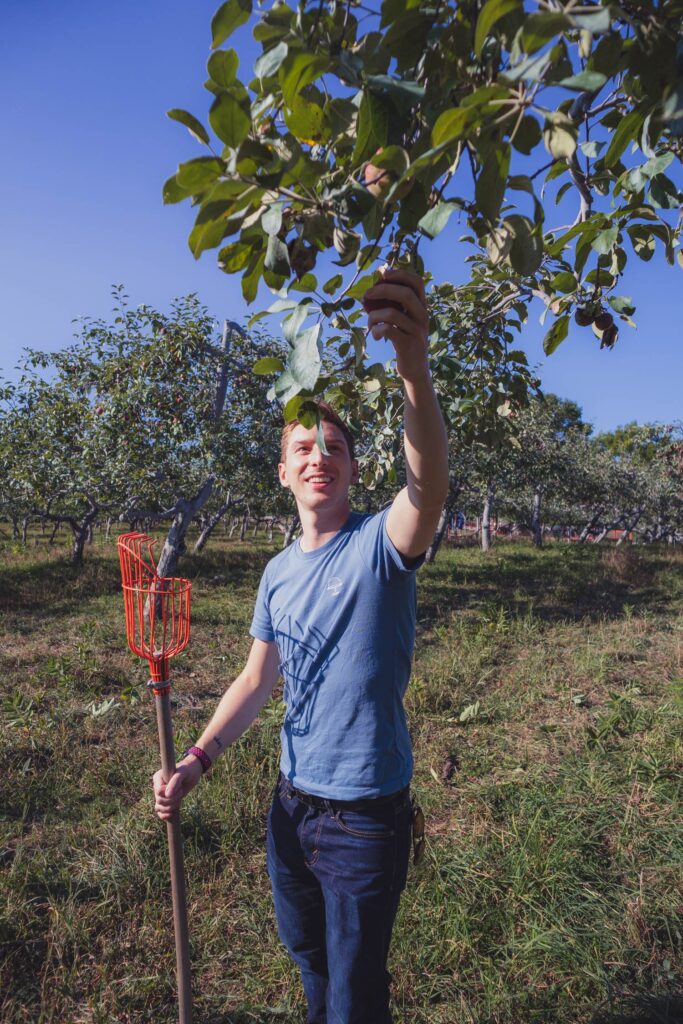
Appelflappen Recipe
With the apples from our apple picking trip, I decided to make Dutch apple turnovers, or appelflappen. Diced apples are sweetened with a bit of sugar, spiced with a hefty spoonful of cinnamon, and enveloped in a buttery-flaky parcel of puff pastry.
Below is a recipe for quick puff pastry, which reduces the commitment from a weekend project down to just a couple hours. If you feel like that’s still too long to delay the enjoyment of some apple turnovers, you can also use store-bought puff pastry.
If you can get it, use coarse sugar for sprinkling. Not only will the turnovers look better, but it adds a nice crunch on the top of the pastry.
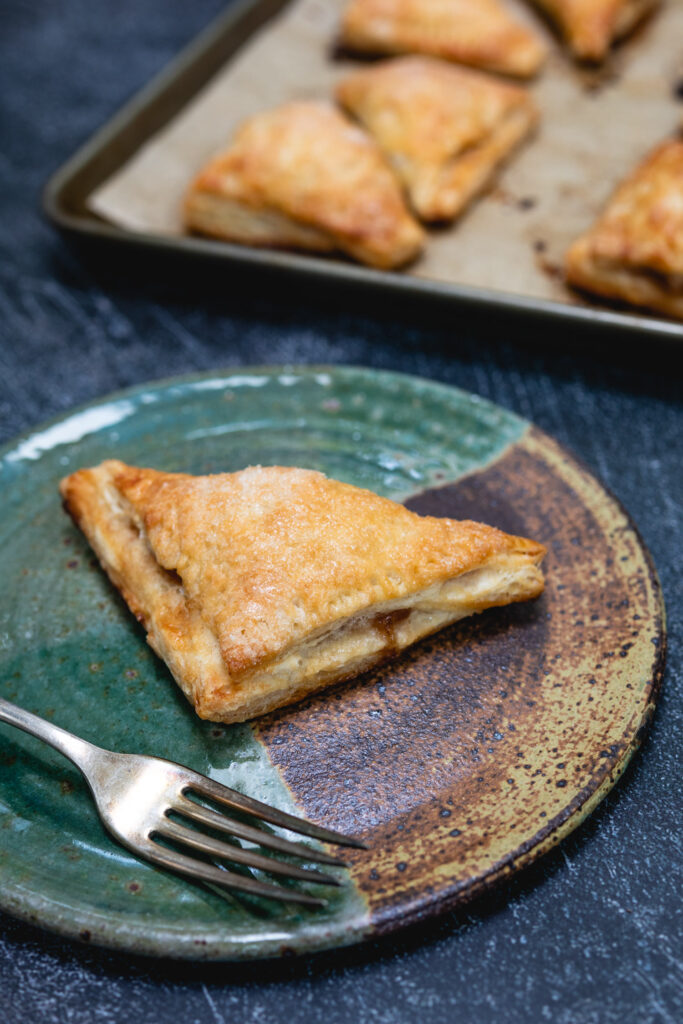
Ingredients:
Yields 16-20 turnovers.
Quick Puff Pastry:
450g plain flour
1 teaspoon salt
140ml water, cold
1 Tablespoon cider vinegar
3 3/4 cups all-purpose flour
1 teaspoon salt
6 Tablespoons water, cold
1 Tablespoon cider vinegar
Apple Filling:
50g granulated sugar
1 teaspoon cinnamon
1/4 cup granulated sugar
1 teaspoon cinnamon
1 large egg, for egg wash
Coarse sugar, for sprinkling
Quick Puff Pastry
Slice and chill the butter:
Cut the butter into thin 1/4-inch (6mm) slices. Chill the butter again thoroughly after handling.
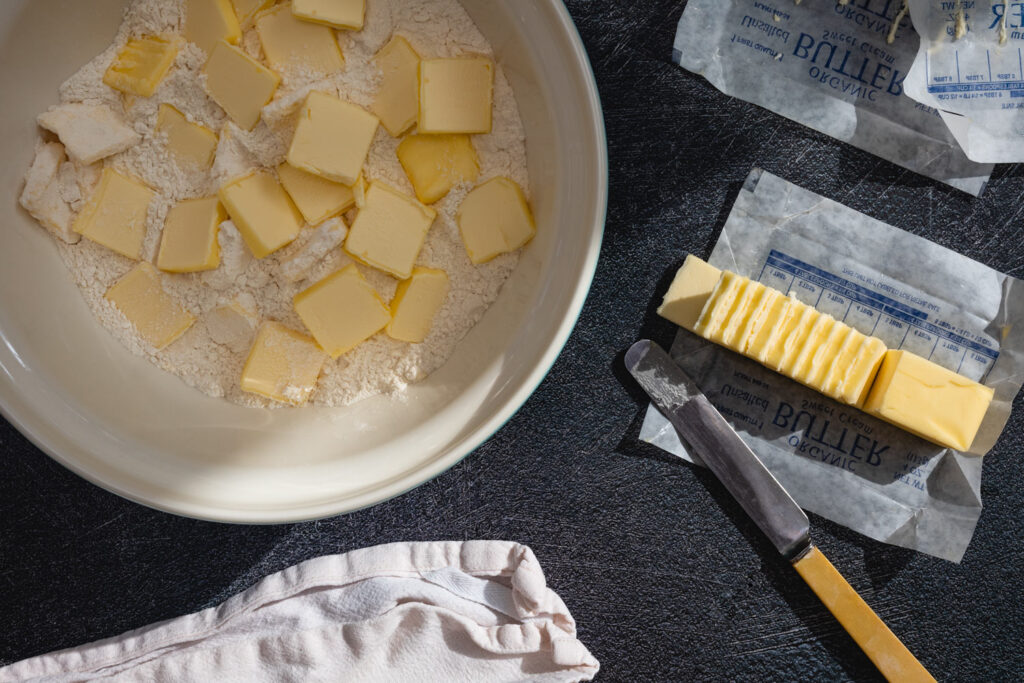
Combine the water and vinegar:
Combine the water and vinegar and keep in the refrigerator until ready to use.
Combine the dry ingredients:
In a large bowl, whisk together the flour and salt.
Add the cold butter:
Add the cold butter, stirring to coat each slice with flour so they don’t stick together.
Pour in the water and vinegar:
Slowly pour in the water and vinegar mixture and stir with a rubber spatula or fork until the dough starts to come together. Pour the dough out onto your work surface and gently knead just until the dough forms a cohesive ball.
Chill:
Shape the ball of dough into a disk, wrap in plastic, and chill in the refrigerator for at least 30 minutes.
Complete the first turn:
Take the dough out of the refrigerator and set aside the plastic wrap.
Lightly dust a large work surface and the dough with flour.
With a rolling pin, roll the dough into a rectangle about 12-inches (30cm) long and about 1/2-inch (1.5cm) thick. You don’t have to be precise, it’s more of a guideline.
Fold the top third of the dough over the middle of the dough. Then fold the bottom third over the top, like folding a letter.
This process is called a single turn.
Complete the second turn:
Rotate the dough 90 degrees so the seam is facing you.
Repeat the steps for the first turn. Make sure to lightly dust with flour anytime the dough starts to stick to the work surface.
Chill and rest the dough (optional):
At this point, if the dough is starting to warm up and stick, or if it resists you when rolling it out, you can wrap the dough back in plastic and let it rest in the refrigerator for 30 minutes.
Complete the third and fourth turns:
Complete two more single turns. Wrap the dough in plastic and let it rest in the refrigerator for 30 minutes. After resting, the dough is ready to use.
Apple Filling
Dice the apples:
Peel and core the apples. Dice the apples into small cubes, about 1/4-inch (6mm) in size.
Make the filling:
In a medium bowl, combine the diced apples with the sugar and cinnamon. Ensure that the sugar and cinnamon are distributed evenly.
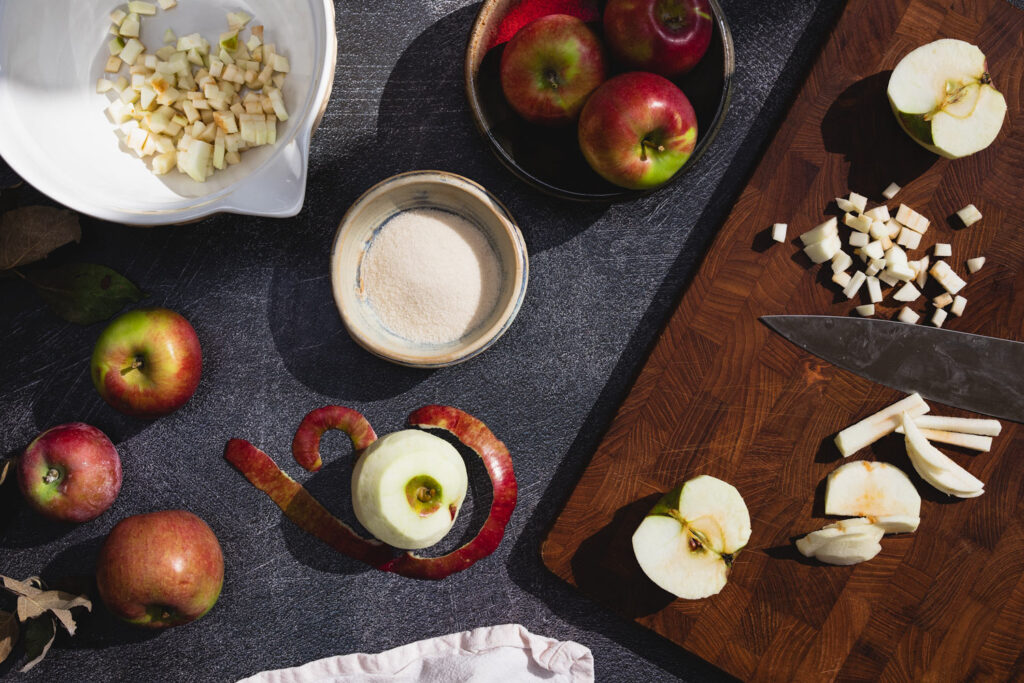
Assemble the Turnovers
Prepare an egg wash:
Crack an egg into a small bowl and whisk for a few seconds. Set aside.
Roll out the dough:
Cut the dough in half and work with one half at a time to keep the dough cold.
Lightly dust a large work surface and the dough with flour.
Use a rolling pin to roll out a thin rectangle, about 23-inches (58cm) long and 10-inches (25cm) wide. If the dough starts to stick to the work surface, lightly coat it with more flour.
If at any point, the dough resists you by springing back and shrinking, transfer it to a parchment-lined baking sheet, cover it with plastic, and let it rest in the refrigerator for 15 minutes. This allows the gluten to relax again, making it easier to roll out the dough without compromising the layers in the puff pastry.
Cut squares of dough:
Measure and cut two rows of equal squares. Aim for 8-10 squares, about 4 1/2-inches (11cm) wide.
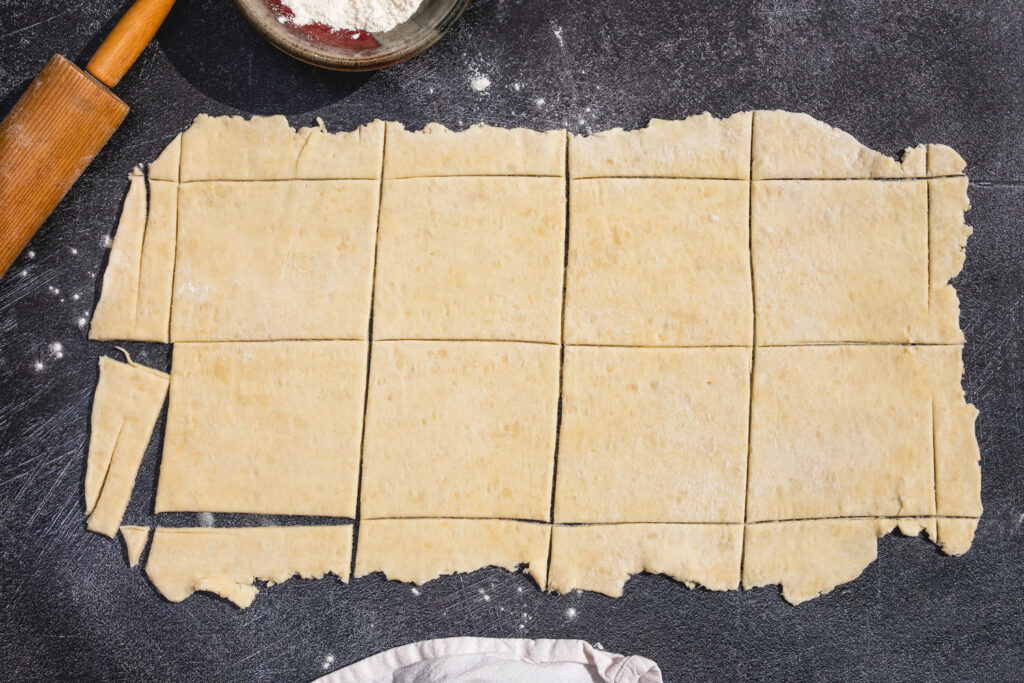
Fill the turnovers:
Spoon a rounded tablespoonful of the apple filling into the middle of each square of dough.
Fold the turnovers:
Brush the edges of each turnover with the egg wash. Fold the dough over the filling diagonally, corner to corner, forming a triangle. Use your fingers, or the tines of a fork to seal the edges. Tip: dip the tines of the fork in flour so it doesn’t stick the dough when sealing the turnovers.
Repeat with the second half of the dough.
Chill the turnovers:
Place the assembled turnovers on a parchment-lined baking sheet and chill them in the refrigerator for 30 minutes before baking.
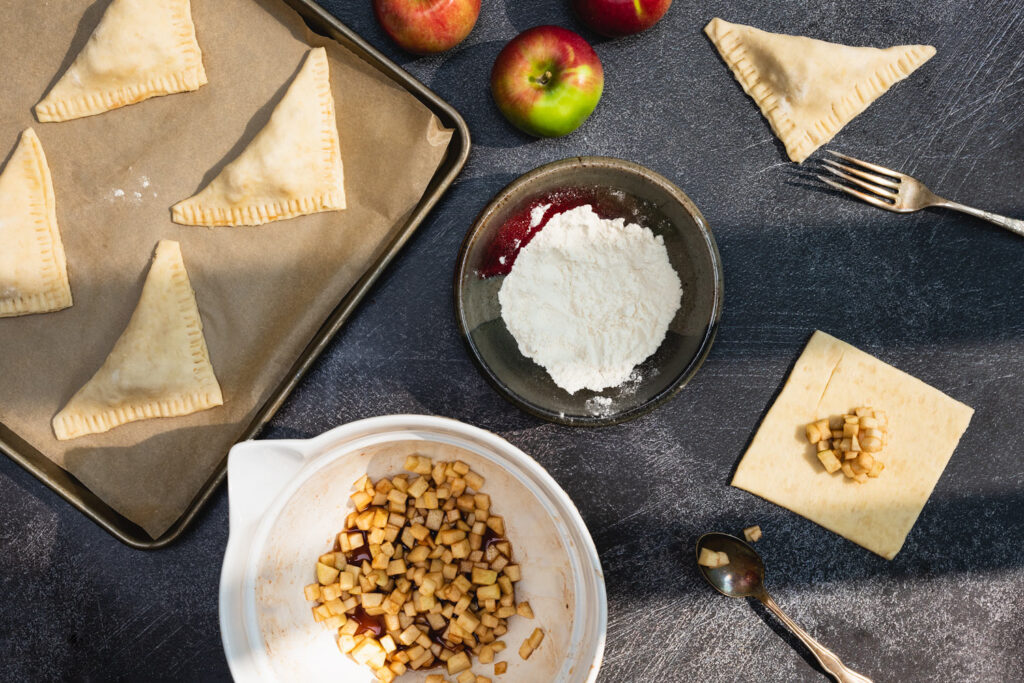
Bake the Turnovers
Preheat the oven:
Preheat the oven to 375°F (190°C).
Brush with egg wash:
Brush the tops of each turnover with the egg wash and sprinkle generously with sugar.
Bake the turnovers:
Bake the turnovers at 375°F (190°C) for 30 minutes until puffed and golden brown on top.
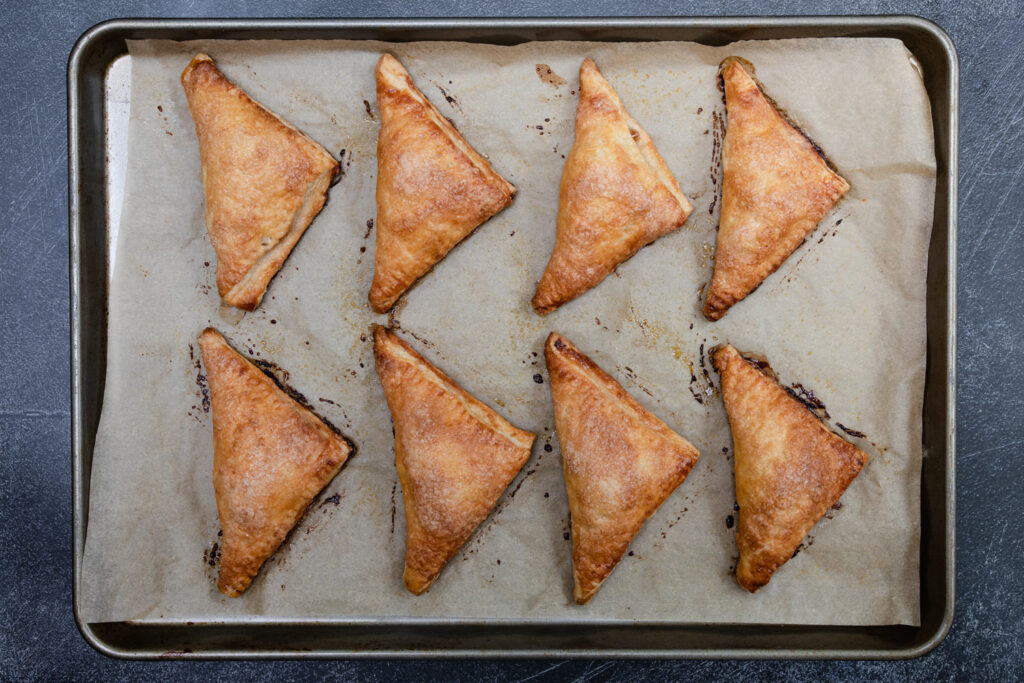

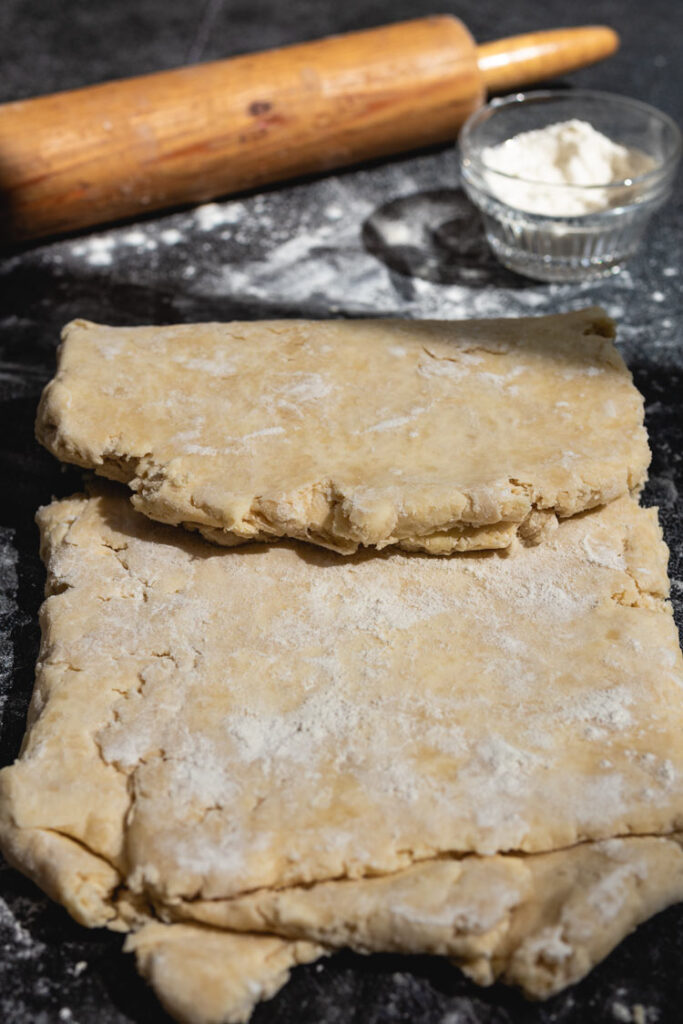
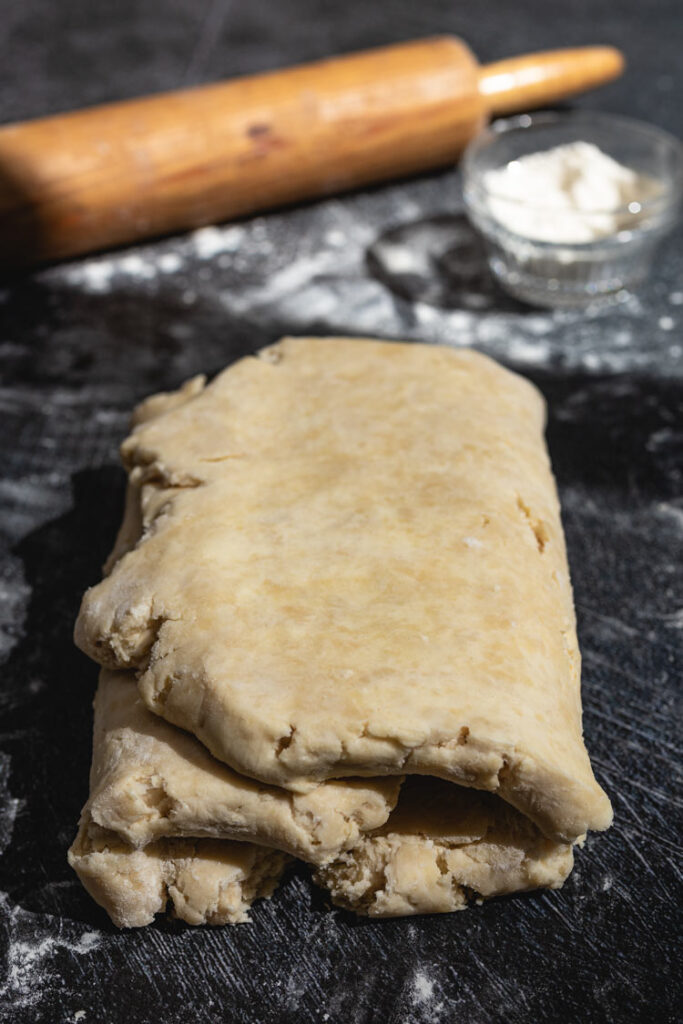
No Comments